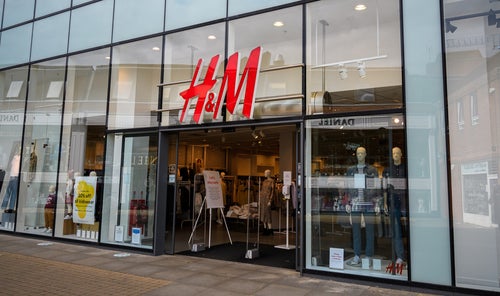
H&M reported net sales were up 6% to SEK57.6bn (US$5.3bn) during the period ending 31 May.
Gross profit increased to SEK30.3bn while operating profit fell to SEK4.7bn from SEK4.9bn a year earlier.

Discover B2B Marketing That Performs
Combine business intelligence and editorial excellence to reach engaged professionals across 36 leading media platforms.
H&M attributed this decline to higher selling and administrative expenses and increased raw material and freight costs, a stronger US dollar and the fallout of the Russia-Ukraine war.
Profit after tax fell to SEK3.3bn from SEK3.7bn a year earlier.
But the news did see H&M shares reach their highest point in 16 months, particularly since Q1 numbers failed to impress industry onlookers despite share jumps.
Helena Helmersson, CEO, said: “With the second quarter behind us we can conclude that we have taken a number of further important steps towards our goals. We increased sales in many markets despite reduced purchasing power and unfavourable weather conditions compared with last year. The summer collections have been well received and the third quarter has got off to a good start. The conditions for increased growth as well as profitability continue to develop in a favourable direction.
“The external factors that affect our purchasing costs continue to improve, work on the cost and efficiency programme is proceeding at full speed, and much of the work that we have done in recent years is starting to bear fruit. We are also continuing our initiatives focusing on the customer offering, while at the same time, we want to give our customers an even better experience with more inspiration and flexibility in our physical stores and digital channels.
With a robust financial position, stable cash flow and a well-balanced inventory, the H&M group stands strong. Our long-term goals remain in place. Already next year the operating margin is to reach 10%.”

US Tariffs are shifting - will you react or anticipate?
Don’t let policy changes catch you off guard. Stay proactive with real-time data and expert analysis.
By GlobalDataH&M lags behind competitors as its collections fail to capture attention
Global Data apparel analyst, Alice Price said:
“H&M’s H1 FY2022/23 results cast a disappointing picture once again, as although sales in its reported currency rose by 8.5%, this represents an increase of just 1% in local currencies. H1 reported revenue finally surpassed pre-pandemic levels, up 3.7%, however Q2 was up just 0.2%, and only 5.7% on the year. H&M therefore still trails behind competitor Inditex, which saw sales in the three months to 30 April 2023 up 28.8% versus pre-pandemic.
“The group attributes its struggles to external factors such as its exit from Russia, Belarus and Ukraine, and poor weather, however Inditex remains up against the same challenges and has fared much better. Instead, H&M’s core brand offering remains the crux of the issue, with its uninspiring ranges unable to compete with Zara’s trend-led styles, and dragging down total group sales, as its portfolio brands performed much better, increasing 17% in Q2. In more recent trading, H&M’s sales were up 10% in local currencies between 1-27 June 2023, marking a significant improvement, however this has likely been aided by its summer sale, with the group expecting higher markdown costs in Q3 compared with last year, suggesting sales may peter off once full price trading resumes.
“Despite the easing of lockdown restrictions in China at the end of 2022, this has failed to improve H&M’s performance in the Asia, Oceania, and Africa region, with revenue down 1% in local currencies off a marginal increase of 5% last year. Despite reportedly high demand in China for its Mugler collaboration in Q2, it seems that the effects from the Chinese government’s blocking of the group in 2021 are long lasting, after it condemned the country’s use of Uyghur Muslims for labour on cotton farms in Xinjiang, with Chinese consumers now continuing to favour domestic brands. Eastern Europe was unsurprisingly the worst performing region, with sales down 16%, however the Nordics and Southern Europe were its strongest, with sales up 5%, with the latter likely benefitting from its more favourable weather conditions leading to better consumer interaction with its spring/summer collections. Sales in its key markets of Western Europe and North and South America were muted, with sales up just 3% and 2% respectively, likely due to the ongoing macroeconomic challenges making consumers more discerning of what they spend their money on.
“H&M has begun exploring ways to improve its current position in the market, turning its attention to the lucrative Gen Z demographic. In April 2023, H&M announced plans to merge its portfolio brands Monki and Weekday alongside reviving denim brand Cheap Monday, to provide a one-stop destination that resonates with the younger generation. This will help H&M better capture this age group and stand out against the likes of Inditex-owned Bershka and Pull and Bear, which remain firm favourites among Gen Z, for their on-trend styles. H&M must also take note from the success of its recent collaboration with Mugler. Launched in May 2023, the collection featured iconic styles synonymous with the fashion house, and was well received by shoppers, as it quickly sold out of stock. Such collaborations represent an opportunity for H&M to gain a competitive edge in the market, enabling customers to shop elevated looks at more affordable prices, which will appeal to consumers during this period of financial instability.”





